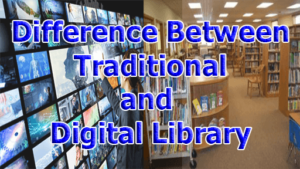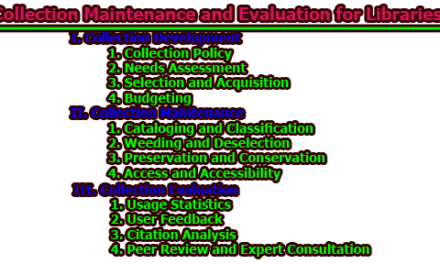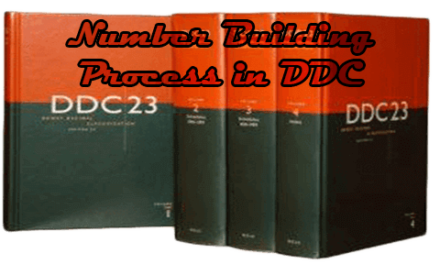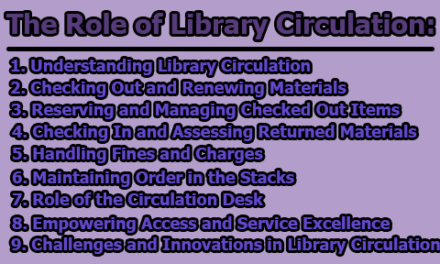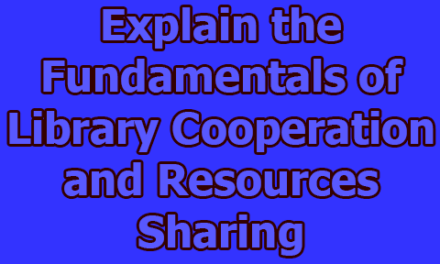A digital library is a library where you can find digital repositories, or digital collections, online databases of digital objects that may include text, still images, audio, video, digital documents, or other digital media formats. Objects can contain digitized content such as prints or photographs, as well as primarily produced digital content such as word processor files or social media posts. In addition to storing content, digital libraries provide a way to organize, search, and retrieve the contents of a collection. Whereas traditional libraries emphasize the archive and preservation of physical items especially books and periodicals that were the custodians of the librarian library. Information is physically gathered in one place; Users need to learn what is in the library and use it.
Difference between Traditional and Digital Library: There are several differences between traditional and digital library mentionable some are given below;
| Traditional Library | Digital Library |
| 1. Library staff performs their duties in the acquisition section, cataloguing Section, classification section, periodical section as well as different sections as per need. | 1. To provide easy access to information to users available in various electronic formats. |
| 2. To identify and recognize different methods to procure books in library economically and qualitatively. | 2. To identify the user’s needs and procure the information resources for the users. |
| 3. To acquire books, periodicals, journals through proper vendors and as recommended by users and the management authorities. | 3. To procure e-Books and online journals and other digital publication to the users as per needs. |
| 4. To circulate publisher catalogues among the faculties for the recommendations of books based on need. | 4. To subscribe to online journals, e-books, databases and provide internet facility for the utilization of resources to gain knowledge. |
| 5. To communicate with the teaching faculty to recommend different titles, print journals required for the syllabus. | 5. To automate the library with library software and provide faster access and reference service to the users. |
| 6. To prepare the budget for the purchase of different resources and types of equipment in libraries. | 6. To provide OPAC service with networking facilities to the users and help in resource sharing. |
| 7. To record properly acquired resources both print and digital. | 7. To develop library website for getting information from different locations by giving links to resources. |
| 8. Process the material for access by catalogues and classify books, and prepare index terms and organize a collection for effective use. | 8. Libraries should have digital library software to access the digital contents subscribed and analyzed by the library. |
| 9. To provide indexing; abstracting; reference service; information services etc. | 9. To provide access to back issues of online journals to the users. |
| 10. To provide information from the traditional sources including access to digital resources. | 10. Learn skills to maintain the digital library in addition to technical. |
| 11. To provide current awareness services as well as Selective Disseminate services to the users using different resources. | 11. Library staff has knowledge of hardware and software to provide digital, electronic, and virtual services using digital collections to the users. |
Reference:
Trivedi, D. R. (2017). A Critical Review on Conventional and Modern Library Services. International Journal of Research in Library Science, 3(1), 145-149.

Library Lecturer at Nurul Amin Degree College

